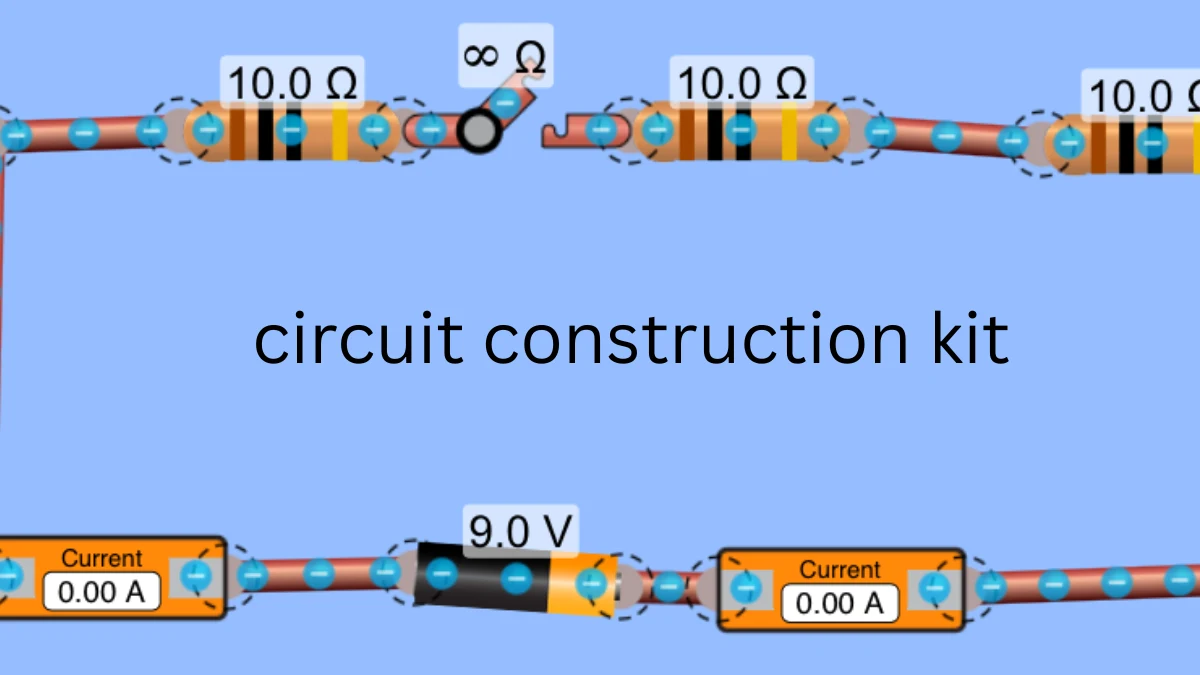The Circuit Construction Kit is a powerful interactive tool used to learn the basics of electrical circuits. Whether you’re a student, teacher, or simply curious about how circuits work, this simulator provides a hands-on, visual way to experiment and understand the flow of electricity. In this guide, we’ll explore the key features, benefits, and uses of the Circuit Construction Kit and how it supports learning outcomes in STEM education. Tool Name Circuit Construction Kit Developed By PhET Interactive Simulations (University of Colorado Boulder) Available Versions Circuit Construction Kit: DCCircuit Construction Kit: DC – Virtual Lab Platform Web-based, HTML5 (also available as downloadable simulation) Key Components Battery, Wire, Light Bulb, Switch, Resistor, Ammeter, Voltmeter Views Supported Schematic View, Realistic View Main Purpose Interactive simulation for learning basic electric circuits Target Users School students, college students, teachers, hobbyists Device Compatibility Desktop, Laptop, Tablets (via browser) Educational Value Visual learning, safe experimentation, self-paced practice What is the Circuit Construction Kit? The Circuit Construction Kit (CCK), developed by PhET Interactive Simulations at the University of Colorado Boulder, is a digital platform that lets users build, test, and analyze electric circuits virtually. It mimics real-life circuit behavior and offers components such as resistors, batteries, light bulbs, switches, wires, and more. There are two versions: Key Features of the Circuit Construction Kit Benefits of Using the Circuit Construction Kit Applications in Education For Students: For Teachers: Popular Circuit Projects You Can Try How to Access the Circuit Construction Kit You can access the Circuit Construction Kit for free through the official PhET website: No sign-up or download is necessary for online play. However, there’s also an option to download the simulation for offline use or embed it into your learning platform (like Google Classroom or Moodle). System Requirements How to Use the Circuit Construction Kit Using the Circuit Construction Kit is simple and user-friendly. Follow these steps to get started: 1. Visit the PhET WebsiteGo to the Circuit Construction Kit DC Simulation page. 2. Choose Your VersionSelect either the DC-only version or the AC+DC version based on your learning requirement. 3. Drag and Drop ComponentsAdd batteries, wires, bulbs, resistors, and switches to the canvas by dragging them from the toolbox. 4. Connect the CircuitUse wires to connect the components. The simulation will automatically show if the circuit is complete and functioning. 5. Measure and AnalyzeUse the voltmeter and ammeter tools to measure voltage and current at different points in the circuit. 6. Switch Between ViewsYou can toggle between realistic view (with images of actual components) and schematic view (symbols). 7. Modify and ExperimentTry changing resistance, adding more components, or creating short circuits to see how the circuit responds. Advantages of Circuit Construction Kit Interactive LearningStudents can visualize current flow and voltage drops in real-time. Cost-EffectiveNo need to buy physical components or lab kits. Safe and Risk-FreeEliminates the danger of electric shocks or damaged components. Supports Remote LearningPerfect for online classrooms, self-paced learning, and hybrid models. CustomizableTeachers can design their own activities or use pre-made lesson plans. Language SupportAvailable in multiple languages, making it inclusive for global learners. Disadvantages of Circuit Construction Kit Lack of Hands-On PracticeStudents miss out on physically handling real components and wires. Requires Device and InternetOnline use needs a computer or tablet with a stable internet connection. Limited Advanced FeaturesMore complex circuits (like capacitors, transistors, or microcontrollers) are not available. Over-SimplificationSome real-world circuit behaviors (like noise, resistance fluctuation) may not be fully simulated. Future of Circuit Construction Kits Virtual Reality (VR) IntegrationFuture kits may use VR headsets to simulate real-world circuit labs in 3D environments. Mobile App EnhancementsMore robust mobile versions with interactive lessons, quizzes, and gamified learning experiences. AI-Powered Learning AssistantsSmart assistants could offer real-time guidance and correct circuit errors while you build. IoT and Advanced ElectronicsExpanded toolkits may include support for simulating IoT devices, Arduino, and other embedded systems. Curriculum IntegrationMore alignment with international STEM curricula to support classroom teaching. FAQs 1. Is the Circuit Construction Kit free to use?Yes, it is completely free and accessible online via the PhET website. 2. Can I use it without internet access?Yes. The simulation is available for download for offline use. 3. Is it suitable for school-level education?Absolutely. It’s designed for K-12 and introductory college-level physics education. 4. Does it support both AC and DC circuits?Yes. There are separate simulators for DC-only and AC+DC circuits. 5. Is it available in multiple languages?Yes. The tool is translated into several languages to support global learning.
- Mankandan nagar


